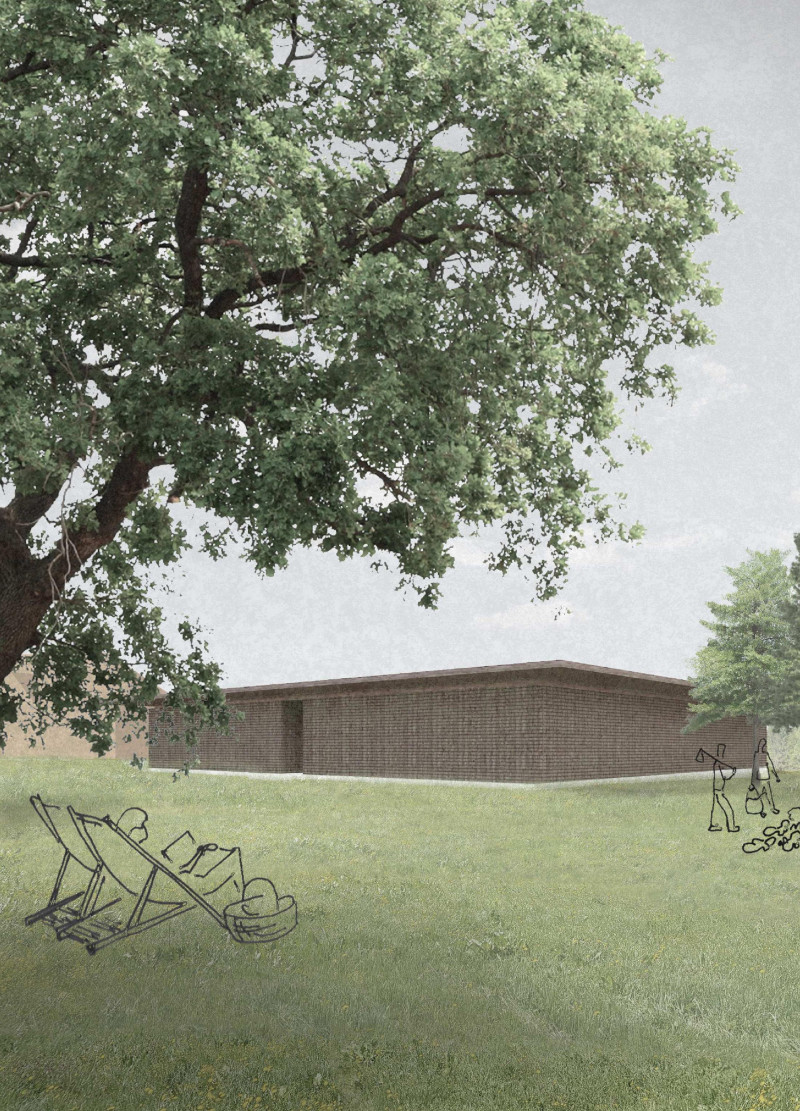5 key facts about this project
The Teamakers Guest House is located in the peaceful landscape of Latgalia, Latvia. It combines architecture with the surrounding nature, offering a space for both community gathering and individual reflection. The design centers around the local tradition of tea-making, emphasizing simplicity and practicality while being mindful of ecological considerations. The guest house functions as a retreat, providing a welcoming atmosphere for visitors to connect with their environment.
Spatial Arrangement
The design features a square layout that organizes different spaces around its edges. Essential areas include restrooms, workshops, a living room, and bedrooms, all arranged to promote both communal interaction and personal privacy. The living room serves as a main area, allowing direct access to a central garden that connects guests to the outdoors and encourages moments of respite.
Materiality
The choice of materials showcases a commitment to sustainability and local culture. The foundations are built using stone reclaimed from a nearby barn, which also preserves a link to the site's history. Solid wood construction and cross-laminated timber are used for structural elements, providing both durability and visual appeal. The exterior is designed with a wooden shell that allows natural airflow and light into the building, ensuring comfort for guests.
Interior Design
Inside, the guest house conveys warmth and comfort through thoughtfully chosen finishes and spatial organization. Soft surfaces and a cohesive color scheme create an inviting environment, encouraging guests to relax and socialize. Smaller gardens placed within the interior promote quiet moments and reflection, balancing the liveliness of shared spaces.
Sustainability Features
The design incorporates sustainable elements, including a rainwater collection system for irrigation and toilet use, reducing the overall environmental impact. A geothermal heating and cooling system enhances energy efficiency, aided by triple-glazed windows that improve thermal comfort.
Every detail within the guest house invites connection, whether through the interplay of natural light, the richness of textures, or the calming presence of greenery. These features emphasize the relationship between the building and its environment, allowing guests to experience a meaningful connection with both nature and tradition.


























